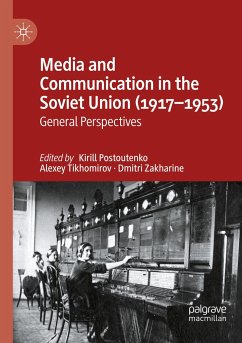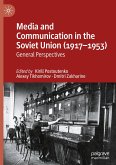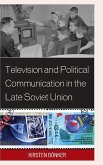This book provides a systematic account of media and communication development in Soviet society from the October Revolution to the death of Stalin. Summarizing earlier research and drawing upon previously unpublished archival materials, it covers the main aspects of public and private interaction in the Soviet Union, from public broadcast to kitchen gossip.
The first part of the volume covers visual, auditory and tactile channels, such as posters, maps and monuments. The second deals with media, featuring public gatherings, personal letters, telegraph, telephone, film and radio. The concluding part surveys major boundaries and flows structuring the Soviet communicate environment. The broad scope of contributions to this volume will be of great interest to students and researchers working on the Soviet Union, and twentieth-century media and communication more broadly.
The first part of the volume covers visual, auditory and tactile channels, such as posters, maps and monuments. The second deals with media, featuring public gatherings, personal letters, telegraph, telephone, film and radio. The concluding part surveys major boundaries and flows structuring the Soviet communicate environment. The broad scope of contributions to this volume will be of great interest to students and researchers working on the Soviet Union, and twentieth-century media and communication more broadly.








